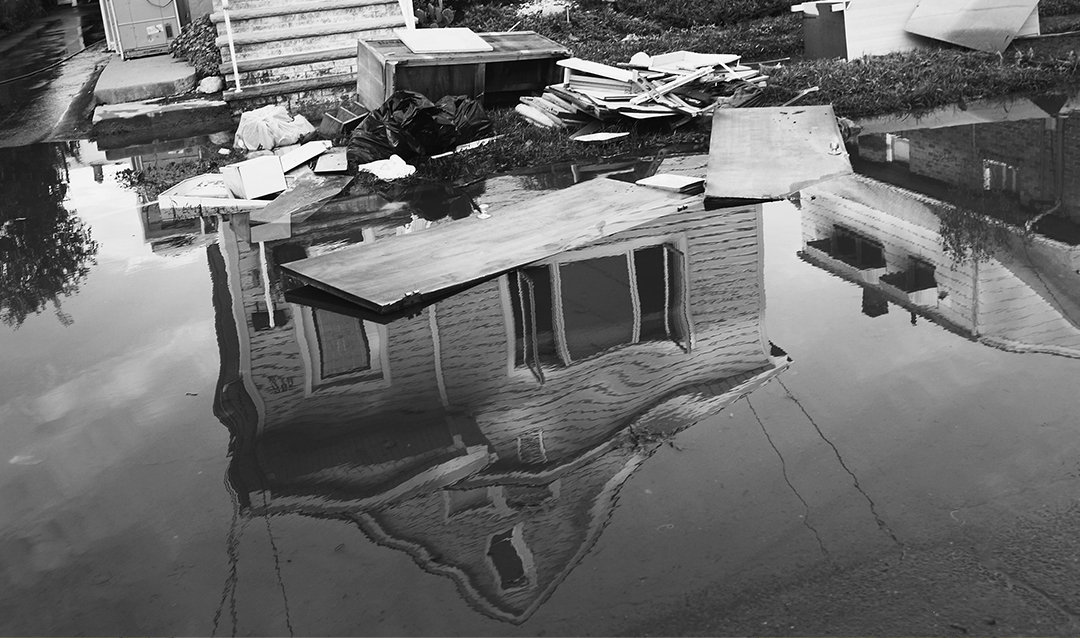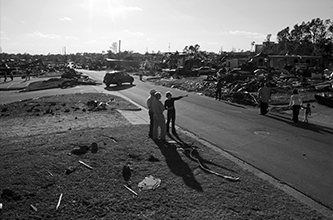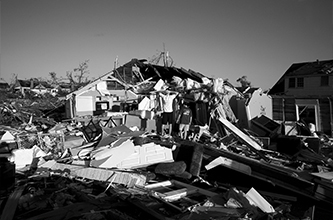Early on the morning of January 17, 1994, a magnitude 6.7 earthquake rocked California’s San Fernando Valley. The Northridge Earthquake killed at least 57 people, injured thousands and resulted in tens of billions of dollars in damage. The cause of this particular quake—one crustal block moving over a second crustal block—produced extremely powerful ground shaking, making it even more destructive.
To recover from the devastation of a rare disaster like the Northridge Earthquake, individuals and communities need to be able to rebuild quickly while navigating tremendous loss. This comes at a cost, most often covered by insurance, and the speed with which insurers make payments can impact the long-term recovery of a region. To operate effectively, insurance companies must prepare for the unknown, predicting the future without much information from events of the past. They do this with catastrophe modeling.
In cases of standard coverage, insurers look for patterns in their extensive claims data to calculate an individual customer’s likelihood of having to make a claim. This straightforward process works well in determining a customer’s auto insurance premium. It is not, however, effective in the case of rare events such as earthquakes, for which insurers cannot conduct statistical analyses of historical claims and losses. With a catastrophe, “what if?” becomes the critical question.
“The necessary premise—that we have a lot of past claims data that we can use to inform our models—basically disappears. Because these are, by definition, rare events, there is not going to be a large amount of past data. [Insurers] cannot use their normal way of operation,” says Paolo Bocchini, associate professor of civil and environmental engineering.
“If we don't have much data, we can't do traditional modeling based on lots of data to figure out what the underlying relationships are among the events and their impacts and so on,” says Brian Davison, professor of computer science and engineering.
A rigorous probabilistic approach to the study of disasters and their consequences, catastrophe modeling, or CatModeling, attempts to estimate potential events and their associated risks, including financial losses. Researchers take what they know about a particular scenario and incorporate methods from a variety of disciplines to make predictions about the likelihood of certain outcomes. In the case of a hurricane, for example, researchers might gather data about past hurricane activity and details about the infrastructure in a particular region. They then build a model to predict the likelihood of the region experiencing losses in a similar storm in the future, as well as the potential cost of recovery from those losses. Beyond natural disasters, decision-makers can use information from CatModeling to plan for rare events such as pandemics, financial crises and political unrest.
Unlike most disciplines, which are born in academia and then applied in industry, says Bocchini, catastrophe modeling was born in the insurance sector as “a sister to actuarial science.” The information it generates can help insurance companies estimate losses and calculate premiums. Its use is not limited to the insurance industry, and it can help leaders at all levels make the best possible decisions about how to protect and ensure the recovery of their communities.








